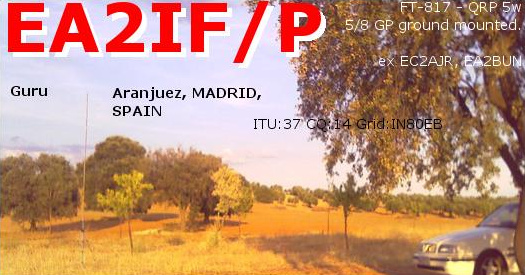I’m looking for a cheap base station vertical antenna for SOTA chasing and some DX on 20m and/or 40m.
For portable use I have a fibreglass fishing pole with a ¼ wave element running up the inside. This seems to work very well portable, although the pole is a bit flimsy (not really any good for a permanent fixture). I figured that for a base antenna I should try to replicate this with a more sturdy pole.
Looking at the prices of fibreglass masts long enough to run a ¼ wave element for 40m, I’m looking at over £200 if I buy new from a fairly well known ham radio retailer (I might as well just buy a factory made mono-band or multi-band vertical and be done with it).
I already have several sections of 5 foot aluminium mast (the type which slot together to make a portable/temporary mast), although I believe that anything conductive (such as aluminium or steel) would de-tune the antenna.
That led me to wonder, CAN I USE THE MAST ITSELF as the vertical radiating element. After all, there’s nothing cheaper than what I already have!!! I believe that some commercial broadcast stations do actually do this?
In other words, can I trim the aluminium mast to a ¼ wave at whatever frequency (either 40m or 20m) and bury a bed of radials around it?
I can see two potential problems with this idea:-
Firstly, aluminium isn’t as conductive as the copper antenna wire that would normally be used for this sort of thing. I wonder if that could result in an inefficient antenna, or make it difficult to tune?
Secondly, the mast (which is effectively the vertical element) will need to be insulated from ground both at the base and on the guy wires. I also presume that metallic guy wires could have a coupling effect and de-tune the antenna? So I guess that I would need non-conductive guy wires/ropes?
So for you antenna gurus out there, I have the following questions:-
-Will it work, or is it a really stupid idea?
-How efficient (or in-efficient) will it be? Generally copper wire is preferred due to its better conductivity), so I’m wondering if using aluminium will make it inefficient? Having said that, many of the big antenna manufacturers do use aluminium for their antennas.
-Has anybody on here already tried this?
It seems like a really cheap and easy way to get a vertical up and get on the lower bands without taking up too much space but I would have thought that more people would already be doing this if it was that simple. There must be something that I’ve overlooked?
